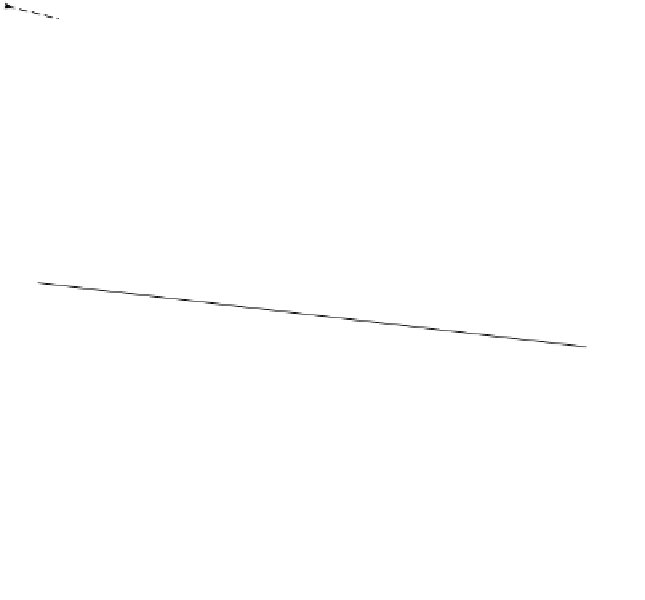Geology Reference
In-Depth Information
delay time can be calculated in a similar way, referring
to Fig. 5.10,
1
2
(5.17)
(
2
2
)
zv
=
d
cos
q
=
d
v v
v
-
v
t1
t
12
2
1
Thus the delay time can be converted into a refractor
depth if
v
1
and
v
2
are known.
The intercept time
t
i
in equation (5.3) can be parti-
tioned into two delay times
d
=-
t
t
t
B C
AB
BC
=-
v
v
1
2
z
z
v
t
=
xv
+
dd
ts
+
=
-
tan
(5.18)
q
2
td
v
cos
q
1
2
where
d
ts
and
d
td
are the delay times at the shot end and
detector end of the refracted ray path. Note that in this
case of a horizontal refractor,
z
z
sin
sin
cos
qq
q
=
-
v
cos
v
q
1
1
)
z
(
1
-
sin
cos
2
z
cos
q
q
=
=
x
v
z
cos
z
cos
x
v
2
z
cos
q
q
q
v
v
q
t
=+
+
=+
1
1
v
v
v
12
2
1
1
2
1
zv
(
2
v
vv
-
2
)
2
1
=
(5.16)
This is the same result as derived earlier in equation (5.1),
showing that the delay-time concept is implicit even in
simple horizontal-lateral interpretation methods.
In the presence of refractor dip the delay time is simi-
larly defined except that the geometry of triangle ABC
rotates with the refractor.The delay time is again related
to depth by equation (5.17), where
z
is now the refractor
depth at A measured normal to the refractor surface.
Using this definition of delay time, the travel time of a ray
refracted along a dipping interface (see Fig. 5.11(a)) is
given by
12
Solving equation (5.16) for the depth
z
to the refractor
yields
(a)
(b)
A
A
v
1
z
z
v
1
θ
θ
C
C
B
v
2
> v
1
B
t
=¢
xv
+
+
dd
ts
(5.19)
v
2
> v
1
2
td
where
d
ts
=
t
AB
-
t
BC
and
d
td
=
t
DE
-
t
DF
.
Fig. 5.10
The concept of delay time.
(a)
x
A
E
v
1
C
B
x'
D
F
v
2
>
v
1
x
(b)
A
E
Fig. 5.11
Refracted ray paths associated
with (a) a dipping and (b) an irregular
refractor.
B
C
F
D
x'
























































